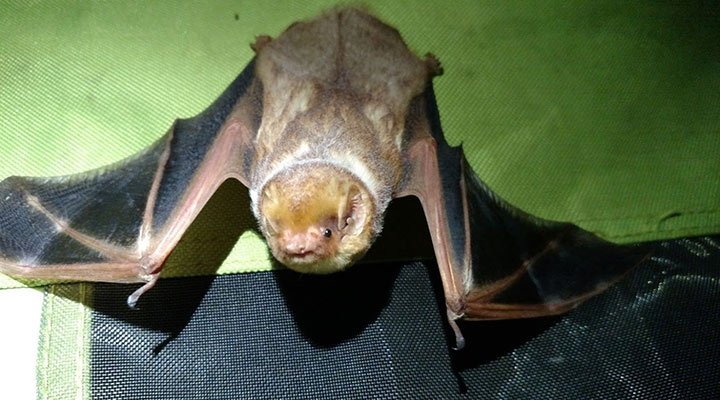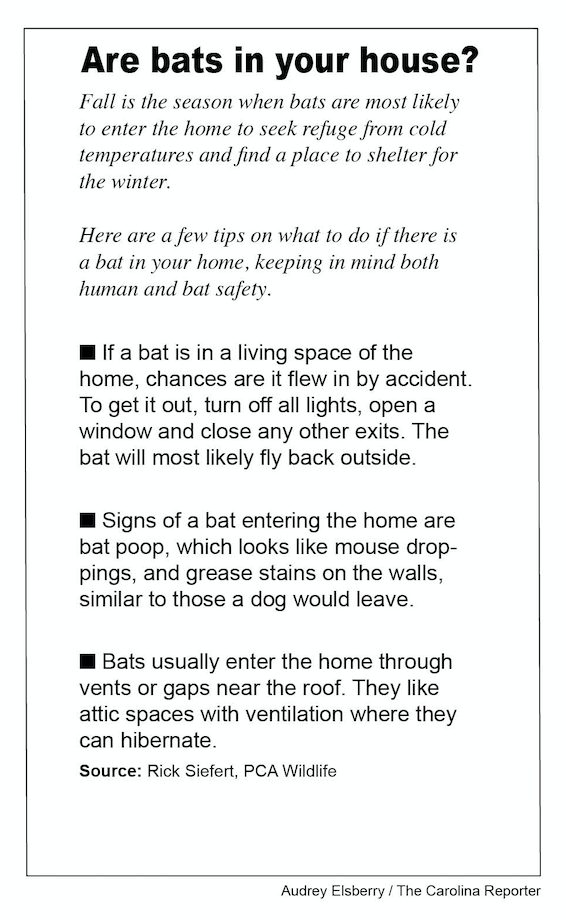Eastern red bats are one of 14 bats common to South Carolina. (Photo courtesy of Stacy Scherman)
Bats in South Carolina are being killed by homeowners and disease. So bat advocates are organizing a program to educate the public on the importance of the threatened species.
The program, S.C. Bat Week, will feature community activities during the last week of October. The South Carolina Bat Working Group, an organization that aims to conserve the state’s bats, will partner with local wildlife organizations to get the word out that bats are beautiful.
“It is a really good partnership with them on awareness for rabies, but also appreciation of bats,” said Jennifer Kindel, a member of the Bat Working Group who is a DNR wildlife biologist.
White-nose syndrome is killing up to 70% to 90% of bats that hibernate, Kindel said. The syndrome happens when a bat is exposed to a certain fungus that grows on its skin and wakes it up from hibernation.
The bat will expend all its energy looking for food when there is none in the winter months. So they often starve to death because of the disease. The fungus was first found in Richland County in 2014 but hasn’t yet been found in Lexington County.
Kindel said bats are important because they love to eat bugs.
In about 10 minutes, bats can eat about 150 mosquitoes, which can carry dangerous diseases, such as the West Nile virus, she said.
Farmers love bats because they eat moths that damage crops, particularly corn and cotton, Kindel said.
“Every year bats save South Carolina $115 million in pest suppression services,” Kindel said.
A colony of 30,000 Southeastern bats, for example, can eat 50 tons of insects per year, according to Kindel.
S.C. Bat Week, which starts Oct. 24, the public can participate in Nature Story Time at Myrtle Beach State Park, Bat Ecology at Charleston County’s Hampton Plantation, a Bat Walk at Beaufort County’s Palmetto Bluff Conservancy, and many more educational activities at sites across South Carolina.
Kindel said many people use bats as scapegoats for many things, including rabies. S.C. Bat Week’s goal is to educate people and debunk myths about bats, Kindel said.
While most mammals have the capacity to carry rabies, fewer than 1% of bat populations carry rabies, Kindel said.
Rick Siefert, owner of Pest Control Authority in Columbia, said bats don’t often carry rabies and many people kill bats when they enter the home due to fear of contracting rabies from the animal.
But he said if a bat has been in the home for an unknown amount of time, the homeowner should call a professional to safely capture the bat and take it in for rabies testing. Those who have been bitten by a bat should consult a doctor.
All 14 species of bats in South Carolina are protected on public land, according to the state’s Department of Natural Resources. Despite their protection, bats are still dying at an alarming rate. Northern long-eared bats will be put on the endangered species list in December, Kindel said.
The Bat Working Group keeps S.C. Bat Week educational flyers on its website year round for anyone wanting to learn more.




